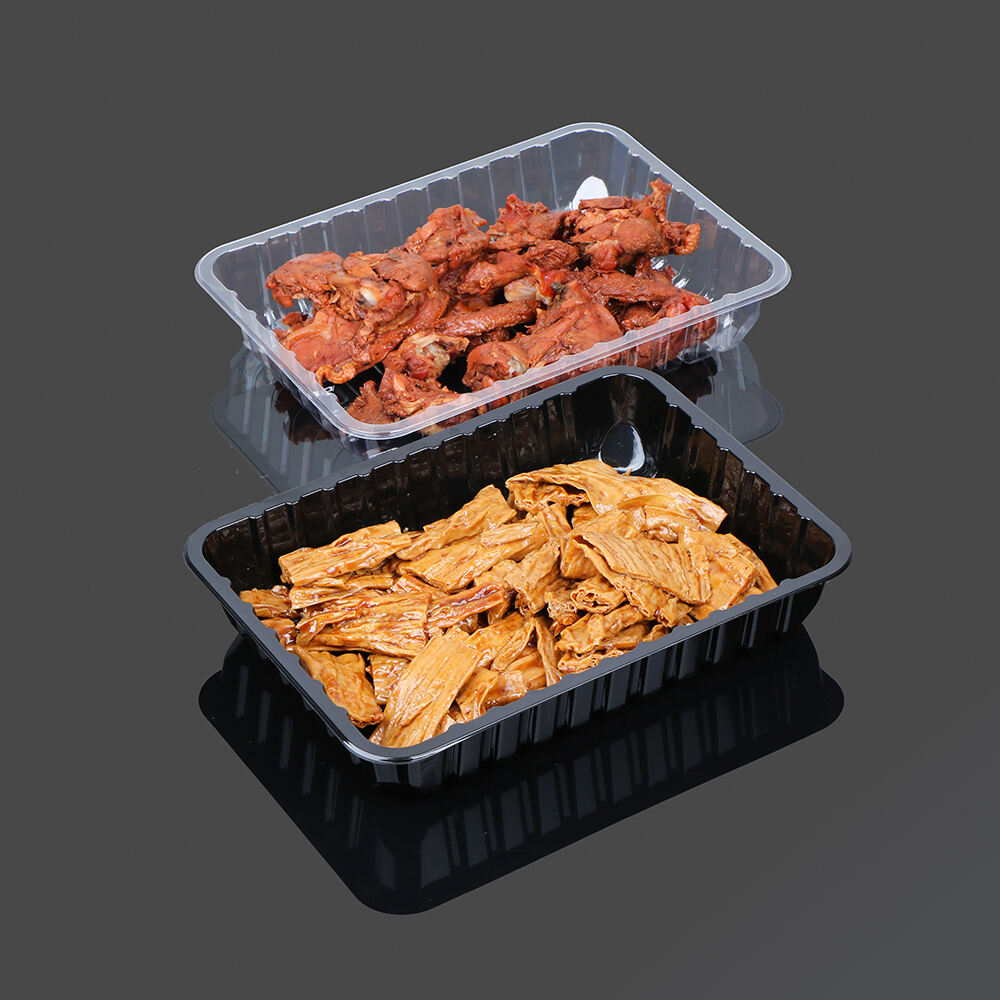MAP food packaging trays are essential components of Modified Atmosphere Packaging (MAP) systems, designed to hold and preserve a variety of food products by maintaining a controlled gas environment. These trays are specifically engineered to work with MAP technology, which replaces the air inside the packaging with a mixture of gases—typically carbon dioxide (CO₂), nitrogen (N₂), and oxygen (O₂)—tailored to the food type, such as meats, cheeses, fruits, or baked goods. The gas mixture inhibits microbial growth, slows oxidation, and reduces respiration in fresh produce, thereby extending the shelf life of the food. Constructed from high-barrier materials like PET (polyethylene terephthalate) or PP (polypropylene), MAP food packaging trays are rigid enough to support the weight of the food and prevent physical damage during transportation and display. They are often paired with a gas-impermeable film that is heat-sealed to the tray, creating an airtight seal that maintains the modified atmosphere. The trays come in various sizes and configurations, including flat trays for meats, compartmentalized trays for mixed foods, and deep trays for liquid-containing products like stews or sauces. Many are transparent, allowing consumers to view the food clearly, which is crucial for assessing quality and freshness. MAP food packaging trays are compatible with automated packaging lines, making them suitable for high-volume production in food processing facilities. They are also designed to withstand the rigors of cold storage, as many MAP-packaged foods are refrigerated or frozen. Manufactured from food-grade materials, these trays comply with strict safety standards, ensuring they are safe for direct contact with food. By extending shelf life and preserving food quality, MAP food packaging trays play a vital role in reducing food waste and improving the efficiency of the food supply chain.


Copyright © 2025 by Zhejiang Hengjiang Plastic Co., Ltd. - Privacy policy